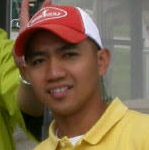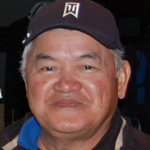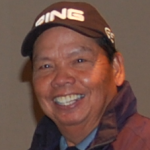GOLF DEFINITIONS
ADDRESS
A player has “addressed the ball” when he has grounded his club immediately in front of or immediately behind the ball, whether or not he has taken his stance.
Ball in bunker – a ball is in a bunker when it lies in or any part of it touches the bunker.
Burrowing Animal
A “burrowing animal” is an animal (other than a worm, insect or the like) that makes a hole for habitation or shelter, such as a rabbit, mole, groundhog, gopher or salamander.
Note: A hole made by a non-burrowing animal, such as a dog, is not an abnormal ground condition unless marked or declared as ground under repair.
Casual Water
“Casual water’’ is any temporary accumulation of water on the course that is not in a water hazard and is visible before or after the player takes his stance. Snow and natural ice, other than frost, are either casual water or loose impediments, at the option of the player. Manufactured ice is an obstruction. Dew and frost are not casual water.
A ball is in casual water when it lies in or any part of it touches the casual water.
Immovable obstruction – anything that is artificial or made by man including surfaces. If your stance and swing but not line of play are affected by it, free relief with one club length from the (NPR) nearest point of relief.
Lateral Water Hazard
A “lateral water hazard” is a water hazard or that part of a water hazard so situated that it is not possible, or is deemed by the Committee to be impracticable, to drop a ball behind the water hazard in accordance with Rule 26-Ib. All ground and water within the margin of a lateral water hazard are part of the lateral water hazard.
When the margin of a lateral water hazard is defined by stakes, the stakes are inside the lateral water hazard, and the margin of the hazard is defined by the nearest outside points of the stakes at ground level. When both stakes and lines are used to indicate a lateral water hazard, the stakes identify the hazard and the lines define the hazard margin. When the margin of a lateral water hazard is defined by a line on the ground, the line itself is in the lateral water hazard. The margin of a lateral water hazard extends vertically upwards and downwards.
A ball is in a lateral water hazard when it lies in or any part of it touches the lateral water hazard.
Stakes used to define the margin of or identify a lateral water hazard are obstructions.
Note 1: That part of a water hazard to be played as a lateral water hazard must be distinctively marked. Stakes or lines used to define the margin of or identify a lateral water hazard must be red.
Note 2: The Committee may make a Local Rule prohibiting play from an environmentally-sensitive area defined as a lateral water hazard.
Note 3: The Committee may define a lateral water hazard as a water hazard.
Loose Impediments
“Loose impediments’’ are natural objects, including:
- · stones, leaves, twigs, branches and the like,
- · dung, and
- · worms, insects and the like, and the casts and heaps made by them,
provided they are not:
- · fixed or growing,
- · solidly embedded, or
- · adhering to the ball.
Sand and loose soil are loose impediments on the putting green, but not elsewhere.
Snow and natural ice, other than frost, are either casual water or loose impediments, at the option of the player.
Dew and frost are not loose impediments.
Obstructions
An “obstruction’’ is anything artificial, including the artificial surfaces and sides of roads and paths and manufactured ice, except:
a. Objects defining out of bounds, such as walls, fences, stakes and railings;
b. Any part of an immovable artificial object that is out of bounds; and
c. Any construction declared by the Committee to be an integral part of the course.
An obstruction is a movable obstruction if it may be moved without unreasonable effort, without unduly delaying play and without causing damage. Otherwise, it is an immovable obstruction.
Note: The Committee may make a Local Rule declaring a movable obstruction to be an immovable obstruction.
OUT OF BOUNDS
A ball is out of bounds when all of it lies out of bounds. A player may stand out of bounds to play a ball lying within bounds.
Objects defining out of bounds such as walls, fences, stakes and railings are not obstructions and are deemed to be fixed. Stakes identifying out of bounds are not obstructions and are deemed to be fixed.
Note 1: Stakes or lines used to define out of bounds should be white.
Note 2: A Committee may make a Local Rule declaring stakes identifying but not defining out of bounds to be obstructions.
Outside Agency
In match play, an “outside agency” is any agency other than either the player’s or opponent’s side, any caddie of either side, any ball played by either side at the hole being played or any equipment of either side.
In stroke play, an outside agency is any agency other than the competitor’s side, any caddie of the side, any ball played by the side at the hole being played or any equipment of the side.
An outside agency includes a referee, a marker, an observer and a forecaddie. Neither wind nor water is an outside agency.
Rub of the Green
A “rub of the green’’ occurs when a ball in motion is accidentally deflected or stopped by any outside agency (see Rule 19-1).
Stance
Taking the “stance’’ consists in a player placing his feet in position for and preparatory to making a stroke.
Stipulated Round
The “stipulated round’’ consists of playing the holes of the course in their correct sequence, unless otherwise authorized by the Committee. The number of holes in a stipulated round is 18 unless a smaller number is authorized by the Committee. As to extension of stipulated round in match play, see Rule 2-3.
Stroke
A “stroke’’ is the forward movement of the club made with the intention of striking at and moving the ball, but if a player checks his downswing voluntarily before the clubhead reaches the ball he has not made a stroke.
Through the Green
“Through the green’’ is the whole area of the course except:
a. The teeing ground and putting green of the hole being played; and
b. All hazards on the course.
Water Hazard
A “water hazard’’ is any sea, lake, pond, river, ditch, surface drainage ditch or other open water course (whether or not containing water) and anything of a similar nature on the course. All ground and water within the margin of a water hazard are part of the water hazard.
When the margin of a water hazard is defined by stakes, the stakes are inside the water hazard, and the margin of the hazard is defined by the nearest outside points of the stakes at ground level. When both stakes and lines are used to indicate a water hazard, the stakes identify the hazard and the lines define the hazard margin. When the margin of a water hazard is defined by a line on the ground, the line itself is in the water hazard. The margin of a water hazard extends vertically upwards and downwards.
A ball is in a water hazard when it lies in or any part of it touches the water hazard.
Stakes used to define the margin of or identify a water hazard are obstructions.
Note 1: Stakes or lines used to define the margin of or identify a water hazard must be yellow.
Note 2: The Committee may make a Local Rule prohibiting play from an environmentally-sensitive area defined as a water hazard.
Wrong Putting Green
A “wrong putting green” is any putting green other than that of the hole being played. Unless otherwise prescribed by the Committee, this term includes a practice putting green or pitching green on the course.

























